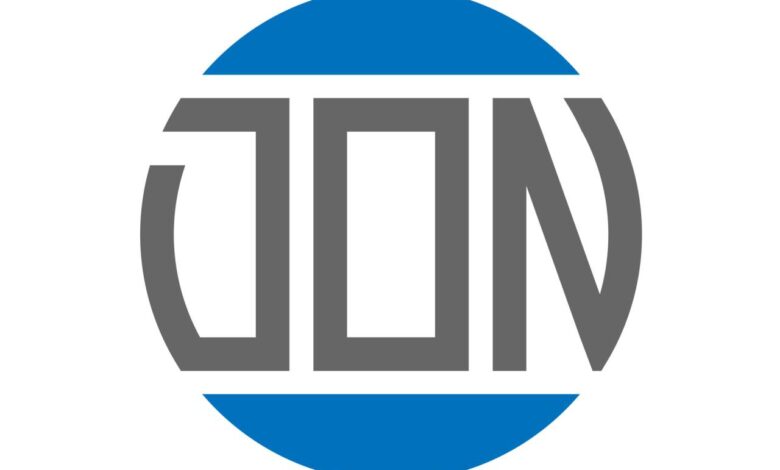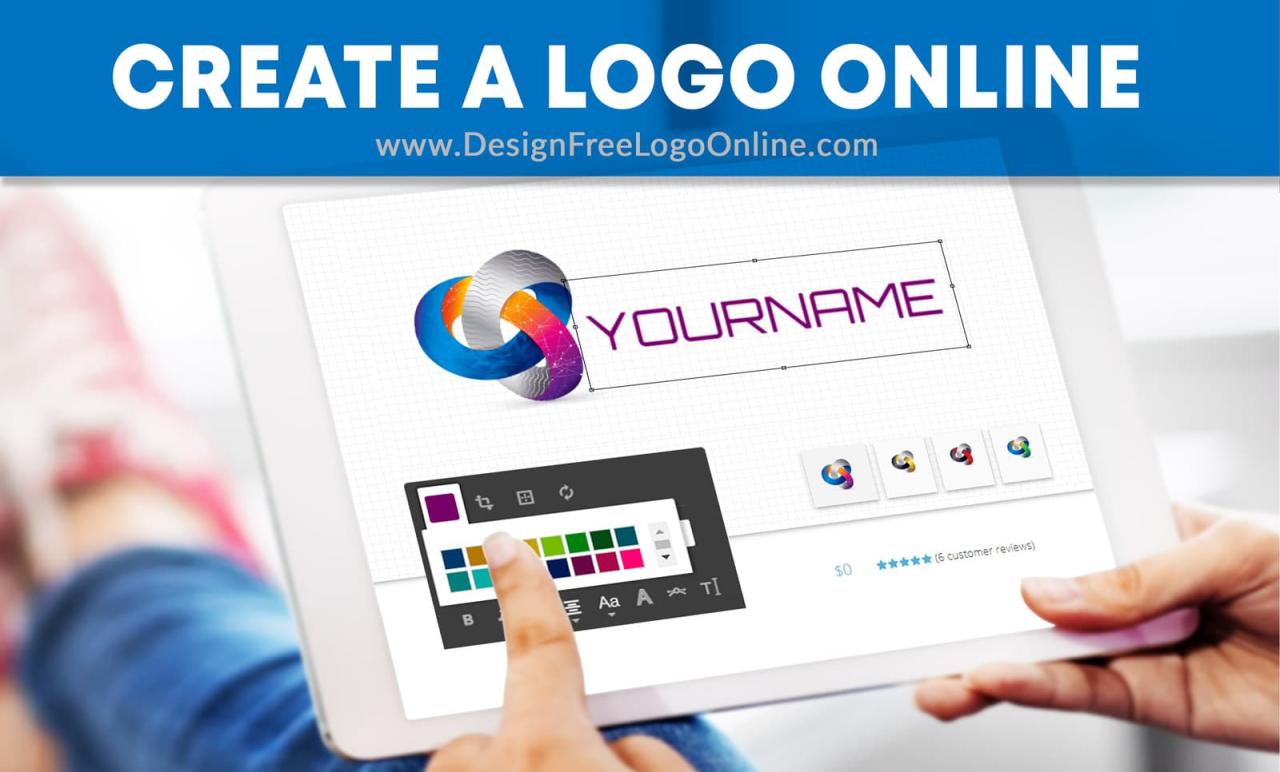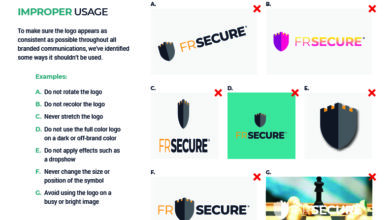
Stay Away DIY Logo Designs Professionalism Matters
Stay away DIY logo designs – that’s my strong advice! Thinking you can whip up a professional logo yourself might seem tempting, especially with all those online design tools. But trust me, the potential for disaster is HUGE. From font mismatches that scream amateur hour to color palettes that clash horribly, a poorly designed logo can seriously damage your brand before it even gets off the ground.
This post dives into why you should leave logo design to the pros and how to find the perfect designer for your needs.
We’ll explore the common mistakes DIYers make, the subtle artistry professional designers bring to the table (think typography, color theory, and the overall brand message), and the long-term impact a bad logo can have on your business. We’ll also cover the costs, finding the right designer, and the legal side of things – because copyright infringement is a real thing, people! Get ready to learn why investing in a professional logo is one of the smartest moves you can make for your brand.
Why Avoid DIY Logo Designs?

Source: designfreelogoonline.com
Designing a logo might seem like a simple task, especially in the age of readily available design software. However, creating a truly effective and impactful logo requires a deep understanding of design principles, branding, and target audience. Attempting a DIY logo often results in a product that fails to represent a brand accurately, hindering its potential for success.
The pitfalls extend beyond mere aesthetics; a poorly designed logo can damage brand credibility and significantly impact marketing efforts.While tempting to save money by designing your own logo, the potential drawbacks often outweigh the perceived cost savings. Professional logo design is an investment that pays dividends in the long run through enhanced brand recognition, increased customer trust, and a more cohesive brand identity.
Common Mistakes in DIY Logo Design
Many individuals undertaking DIY logo design fall prey to common mistakes stemming from a lack of formal training or experience in visual communication. These errors can range from simple aesthetic flaws to fundamental design issues that severely impact the logo’s effectiveness. Ignoring these crucial aspects can lead to a logo that is not only visually unappealing but also fails to communicate the brand’s essence effectively.
- Poor Typography: Selecting an inappropriate font or using fonts incorrectly can severely detract from a logo’s readability and overall aesthetic appeal. For example, using a highly decorative font for a logo intended for a law firm would create a mismatch between the brand’s image and its services. A professional designer carefully considers legibility, brand personality, and overall visual harmony when selecting fonts.
- Inappropriate Color Palette: Color choices are critical in logo design, as they evoke specific emotions and associations. Incorrect color selection can misrepresent a brand’s identity or even clash with its overall marketing strategy. Imagine a children’s toy company using dark, somber colors – the incongruity would be immediately apparent. Professional designers understand color theory and its impact on brand perception.
- Overly Complex Designs: Simplicity is often key to a memorable logo. Overly cluttered or complex designs can be difficult to reproduce at different sizes (e.g., business cards versus billboards) and often lack impact. A logo should be easily recognizable even when scaled down. A complex design risks becoming a confusing jumble at smaller sizes.
- Lack of Scalability and Versatility: A good logo needs to look good in various sizes and formats – from a small website favicon to a large billboard. DIY logos often fail to consider this, leading to distorted or illegible versions when scaled. A poorly designed logo might appear pixelated when reduced in size or lose its details when enlarged.
Examples of Poorly Designed DIY Logos
Imagine a logo for a coffee shop featuring a cartoonish, poorly drawn coffee cup with illegible text in a clashing font combination. The colors are muddy and the overall design is cluttered. This logo would likely fail to convey the sophistication or quality of the coffee shop, potentially repelling customers. Alternatively, a tech startup’s logo might use a generic, overused icon combined with a trendy but ultimately forgettable font, lacking any unique visual identity.
The lack of originality and professional execution makes it blend into the background, failing to stand out in a competitive market. These examples illustrate how neglecting fundamental design principles can result in ineffective and even detrimental branding.
Resources for Understanding Logo Design Best Practices
Numerous books and articles detail the principles of effective logo design. These resources often cover topics such as color theory, typography, visual hierarchy, and branding strategy. Many design schools and online courses offer comprehensive guides and tutorials on logo design, providing valuable insights into the process and the importance of professional execution. Exploring these resources can significantly enhance one’s understanding of what constitutes a successful and impactful logo.
Furthermore, studying the logos of established brands can provide valuable inspiration and insight into effective design strategies. Analyzing their simplicity, memorability, and overall impact can reveal valuable lessons for aspiring designers.
Professional Logo Design
So you’ve decided a DIY logo isn’t the right path. Excellent choice! Now let’s delve into what sets professional logo design apart and why it’s a worthwhile investment for your brand. The difference isn’t just about aesthetics; it’s about strategic branding, longevity, and ultimately, the success of your business.Professional logo designers bring a wealth of knowledge and experience to the table, transforming a simple image into a powerful symbol of your brand identity.
This isn’t just about making something pretty; it’s about crafting a visual representation that effectively communicates your brand’s values, target audience, and unique selling proposition.
Expertise in Typography, Color Theory, and Branding
Professional designers possess a deep understanding of typography, selecting fonts that reflect your brand’s personality and are easily legible across various platforms. They’re skilled in choosing typefaces that are appropriate for your industry, avoiding clichés and ensuring the font is scalable for different sizes and applications. For example, a tech startup might benefit from a modern, sans-serif font, while a law firm might opt for a more classic serif font to convey trust and authority.Color theory is another critical aspect.
A professional designer understands the psychology of color and how different hues evoke specific emotions and associations. They can craft a color palette that aligns perfectly with your brand’s message and resonates with your target audience. A vibrant palette might suit a children’s brand, while a sophisticated palette of muted tones could be perfect for a luxury goods company.Beyond aesthetics, professional designers are experts in branding.
They consider your overall brand strategy, target market, and competitive landscape to create a logo that’s not only visually appealing but also strategically effective. They’ll conduct thorough research, develop mood boards, and present multiple concepts before finalizing the design, ensuring the logo aligns perfectly with your business goals.
Professional vs. DIY Logo Design: A Comparison
The differences between professional and DIY logo design are significant, impacting cost, time, and ultimately, the quality of the final product. Consider this comparison:
| Feature | Professional Design | DIY Design | Notes |
|---|---|---|---|
| Cost | $500 – $5000+ | $0 – $100 (for templates) | Professional design costs vary greatly depending on designer experience and project scope. DIY options are significantly cheaper, but often lack quality and uniqueness. |
| Time Investment | 2-8 weeks (or more for complex projects) | A few hours to a few days | Professional designers invest considerable time in research, concept development, and revisions. DIY approaches are quicker but may result in a subpar logo. |
| Quality | High-quality, original, scalable, and versatile design | Potentially low-quality, generic, limited scalability, and may infringe on copyright | Professional designs are crafted for longevity and adaptability across various media. DIY logos often lack professional polish and may not be suitable for all applications. |
| Expertise | Deep understanding of design principles, branding, and target audience | Limited design skills and knowledge; reliance on templates or limited software | Professional designers possess years of training and experience, leading to a superior outcome. DIY efforts often lack this depth of understanding. |
The Importance of Brand Identity: Stay Away Diy Logo Designs
Your logo is more than just a pretty picture; it’s the visual cornerstone of your brand identity. It’s the first impression you make on potential customers, and a poorly designed logo can significantly hinder your ability to connect with your target audience and build a successful business. Conversely, a well-crafted logo can be a powerful tool, contributing significantly to brand recognition, memorability, and overall success.
Let’s delve into why your logo’s design matters so much.A poorly designed logo can have a lasting negative impact on brand perception. Imagine a logo that’s blurry, uses clashing colors, or is difficult to understand at a glance. This immediately communicates a lack of professionalism and attention to detail. Potential customers might subconsciously associate this poor design with a lack of quality in your products or services, leading to lost opportunities and a damaged reputation.
This negative perception can be incredibly difficult, if not impossible, to overcome, impacting your brand for years to come. Consider a classic example: a poorly designed logo on a product packaging can lead to decreased sales and damage the overall perception of the brand, even if the product itself is excellent.
Logo’s Contribution to Brand Recognition and Recall
A well-designed logo simplifies complex ideas and instantly communicates the essence of your brand. Think of the Nike swoosh – instantly recognizable and synonymous with athletic performance. This level of brand recognition takes time and consistent effort, but a strong logo lays the foundation. The logo’s visual appeal, simplicity, and memorability are key factors in how easily consumers recall and identify your brand amidst the competition.
A simple, memorable logo like the Apple logo helps customers quickly identify the brand and associate it with positive qualities.
Key Aspects of Brand Identity and the Logo’s Role
A strong brand identity encompasses several key aspects, and your logo plays a crucial role in each:
- Visual Identity: The logo is the primary visual element of your brand, setting the tone and style for all other visual communications, from website design to packaging. A consistent and well-designed logo ensures a unified brand image.
- Brand Recognition: A memorable and distinctive logo helps customers quickly identify and recall your brand, fostering loyalty and trust. Think of the instantly recognizable golden arches of McDonald’s.
- Brand Personality: The logo’s style, colors, and typography contribute to your brand’s personality. A playful font might suggest a fun and approachable brand, while a bold, modern font could convey sophistication and innovation.
- Brand Messaging: While not directly conveying words, the logo visually supports your brand’s message. A minimalist logo might suggest elegance and simplicity, aligning with a brand focused on minimalism.
- Brand Value: A well-designed logo reflects the quality and value of your brand. A high-quality logo inspires confidence and trust, encouraging customers to associate your brand with premium products or services.
Finding a Professional Logo Designer

Source: abdulmuhajir.com
Investing in a professional logo design is a crucial step in building a strong brand. While tempting to save money with DIY options, the long-term benefits of a professionally crafted logo far outweigh the initial cost. Finding the right designer, however, requires careful consideration and research. This section will guide you through the process, providing tips and resources to help you find a designer who understands your vision and can deliver exceptional results.Choosing the right logo designer is as important as the logo itself.
A skilled designer will not only create a visually appealing logo but also one that aligns with your brand’s values, target audience, and overall marketing strategy. This ensures your logo effectively communicates your brand’s message and resonates with your customers. Remember, your logo is a visual representation of your business, and a poorly designed logo can significantly hinder your brand’s growth.
Finding Reputable and Skilled Designers
Identifying a reputable and skilled logo designer involves a multi-faceted approach. Start by looking at their portfolio – do their previous designs align with your style preferences and industry standards? Check online reviews and testimonials to gauge client satisfaction. A designer with a consistent history of positive feedback is a strong indicator of reliability and skill. Also, consider their communication style – a designer who is responsive, professional, and willing to collaborate will ensure a smooth design process.
Finally, look for designers who offer revisions as part of their services, allowing you to refine the design until it perfectly meets your expectations.
Questions to Ask Potential Logo Designers
Before committing to a designer, a thorough questioning process is essential. This checklist will help you assess their capabilities and suitability for your project.
- What is your experience designing logos for businesses similar to mine?
- What is your design process, and how will you involve me throughout the process?
- What file formats will you provide, and what are the usage rights for the logo?
- How many revisions are included in your package, and what is the cost for additional revisions?
- What is your turnaround time for completing the logo design?
- Can you provide references from previous clients?
- What is your pricing structure, and what does it include?
- What is your approach to ensuring the logo is scalable and adaptable across different platforms?
Platforms and Methods for Finding Designers
Several platforms and methods exist for finding professional logo designers. Each offers different advantages and levels of control.
- Freelance Platforms: Sites like Upwork and Fiverr offer a vast pool of designers with varying skill levels and pricing. These platforms allow you to browse portfolios, compare prices, and communicate directly with designers before hiring.
- Design Agencies: For larger projects or more complex branding needs, consider working with a reputable design agency. Agencies typically employ teams of designers and offer a broader range of services beyond logo design.
- Online Directories: Websites like Behance and Dribbble showcase the work of talented designers. While not direct hiring platforms, they offer excellent resources for finding designers whose style resonates with your vision.
- Referrals: Networking within your industry or seeking recommendations from trusted colleagues can lead to highly qualified designers.
Budgeting for Professional Logo Design
Investing in a professional logo design is a crucial step for any business, big or small. While it might seem like an upfront cost, a well-designed logo is an investment that pays dividends in brand recognition, customer trust, and ultimately, profitability. Understanding the cost involved and exploring options to fit your budget is key to making an informed decision.The cost of professional logo design varies significantly depending on several factors.
Generally, you can expect to pay anywhere from a few hundred dollars for a basic package to several thousand dollars for a comprehensive branding package that includes a wider range of deliverables. This wide range highlights the importance of understanding what influences the final price.
Factors Influencing Logo Design Prices
Several key factors contribute to the final price you’ll pay for a professional logo design. These factors are intertwined and often work together to determine the overall cost. A designer’s experience and reputation heavily influence their pricing. Established designers with a strong portfolio and proven track record will naturally charge more than newer designers. The complexity of the project itself also plays a significant role.
A simple, minimalist logo will cost less than a complex design requiring intricate illustrations or custom typography. The scope of the project—whether it includes only the logo or extends to a full brand identity package with stationery, style guides, and other brand assets—significantly impacts the overall cost. Finally, the designer’s location and the level of client involvement also influence pricing.
Designers in high-cost areas will generally charge more, and projects requiring extensive client feedback and revisions may incur additional fees. For example, a simple logo design from a freelance designer might cost $300-$500, while a comprehensive branding package from a well-established agency could cost $5,000 or more.
Alternative Approaches for Budget-Conscious Businesses, Stay away diy logo designs
For businesses with tighter budgets, several alternative approaches can help secure professional design without breaking the bank. One option is to explore freelance designers on platforms like Upwork or Fiverr. These platforms offer a wide range of designers with varying levels of experience and pricing, allowing you to find a good fit within your budget. However, it’s crucial to carefully review portfolios and client testimonials before making a decision.
Another option is to look for designers offering package deals or tiered pricing structures. These packages often provide a range of services at different price points, allowing you to select the option that best aligns with your needs and budget. Finally, consider collaborating with a design student or recent graduate. While their experience may be less extensive, they often offer competitive rates and are eager to build their portfolios.
Remember to clearly define your requirements and expectations to ensure you receive a logo that meets your business needs. It’s important to remember that even with a limited budget, investing in a professional logo is far superior to using a DIY logo maker; the long-term benefits far outweigh the initial cost savings.
Seriously, folks, stay away from DIY logo designs. Unless you’re a professional designer, the results are usually… less than stellar. Want to learn how to present your brand effectively online? Check out this awesome guide on getting it on with YouTube to boost your visibility. A polished, professional logo is key, so remember, investing in a good designer is way better than risking a DIY disaster.
Copyright and Legal Considerations

Source: vecteezy.com
Protecting your brand’s visual identity is crucial, and that starts with understanding the legal ramifications surrounding your logo design. A well-designed logo is a valuable asset, representing your company’s image and instantly recognizable to your customers. Ignoring copyright laws can lead to significant financial and reputational damage.Copyright protection for logo designs is automatic upon creation; the moment you finalize your logo, it’s legally protected under copyright law.
This protection grants you exclusive rights to reproduce, distribute, display, and create derivative works based on your logo. However, registering your logo with the appropriate copyright office provides additional legal recourse and stronger evidence of ownership should any infringement occur. This formal registration offers stronger protection and proof of ownership in case of legal disputes.
Copyright Infringement Scenarios
Using an unlicensed or improperly designed logo can expose your business to several legal issues. These issues can range from cease-and-desist letters and expensive lawsuits to irreparable damage to your brand reputation. Consider the following scenarios:
Imagine a small bakery using a logo strikingly similar to a well-known national bakery chain’s logo. The national chain could easily sue the small bakery for copyright infringement, forcing them to redesign their logo and potentially pay significant damages. This is a clear example of how using a similar design, even with minor alterations, can lead to serious legal problems.
Another scenario involves a company using a stock image or a logo template from a website without the proper license. Even if the logo is slightly modified, this can still be considered copyright infringement if the original design is substantially similar. The original creator retains the copyright, and using their work without permission is a violation. The company could face legal action from the copyright holder, leading to costly settlements or court battles.
This illustrates the importance of always obtaining proper licenses for any design elements used in your logo.
Furthermore, consider a freelance designer who creates a logo for a client and then uses the same design for another client, or even for their own personal use. This constitutes copyright infringement as the designer does not own the copyright to the logo they created for their client. The original client retains the exclusive rights. This highlights the importance of clear contractual agreements between designers and clients.
Visual Examples
Let’s look at some real-world examples of good and bad logo design. Seeing these side-by-side will illustrate the principles we’ve discussed and help you understand the impact of design choices. Remember, a well-designed logo is more than just a pretty picture; it’s a crucial element of your brand’s visual identity.
Good Logo Design Examples
Several iconic logos demonstrate effective design principles. These examples consistently use simplicity, memorability, and relevance to create lasting impressions.
- Apple: The Apple logo, a simple, stylized apple with a bite taken out, is instantly recognizable worldwide. Its simplicity allows for versatile applications across various mediums and sizes. The subtle color palette adds to its sophistication.
- Nike: The Nike swoosh is a masterful example of minimalist design. The dynamic curve conveys motion and speed, perfectly aligning with the brand’s association with athleticism. Its simplicity makes it incredibly versatile and memorable.
- Google: The Google logo, with its playful, multi-colored lettering, is friendly and approachable. The slight variation in letterforms adds personality without sacrificing readability. Its simplicity and color scheme create a sense of fun and approachability.
Poor Logo Design Examples
Conversely, poorly designed logos often suffer from clutter, illegibility, or a lack of relevance to the brand. These examples highlight common pitfalls to avoid.
- Logos with excessive detail: A logo crammed with too many elements can be confusing and difficult to remember. The details become lost, making the logo ineffective at conveying a clear message. Imagine a logo with multiple fonts, complex imagery, and gradients all fighting for attention.
- Logos with poor color choices: Clashing colors or a lack of color harmony can create a visually unpleasant and unprofessional impression. A logo with colors that are too similar or that don’t complement each other can make it difficult to read or remember.
- Logos that are not scalable: A logo that looks good at one size but becomes pixelated or distorted when scaled down or up is impractical. This is a common problem with logos that rely on highly detailed imagery or thin lines.
Comparison of Good and Bad Logo Attributes
The following table summarizes the key differences between well-designed and poorly designed logos.
| Logo | Description | Strengths/Weaknesses | Overall Impression |
|---|---|---|---|
| Apple | Simple, stylized apple with a bite | Simple, memorable, versatile, sophisticated | Iconic and instantly recognizable |
| Nike | A single, dynamic swoosh | Minimalist, memorable, conveys motion | Powerful and impactful |
| Playful, multi-colored lettering | Friendly, approachable, versatile | Fun and memorable | |
| Overly Detailed Logo (Example) | A logo with multiple fonts, complex imagery, and gradients | Confusing, difficult to remember, unprofessional | Cluttered and ineffective |
| Poor Color Choice Logo (Example) | A logo with clashing or unharmonious colors | Visually unpleasant, unprofessional, difficult to read | Unattractive and forgettable |
| Unscalable Logo (Example) | A logo with highly detailed imagery or thin lines | Looks good at one size only, pixelates when scaled | Impractical and unprofessional |
Wrap-Up
Ultimately, a logo is more than just a pretty picture; it’s the face of your brand. A poorly designed DIY logo can undermine your credibility and limit your potential for growth. By understanding the intricacies of professional logo design and investing in the expertise of a skilled designer, you’re setting your brand up for success. So, ditch the DIY approach, embrace professional design, and watch your brand flourish! Remember, it’s an investment in your future – not an expense.
FAQ Corner
What are some common DIY logo design mistakes?
Using clip art, choosing inappropriate fonts, neglecting color theory, and creating a logo that’s too complicated or difficult to scale are all common mistakes.
How much should I expect to pay for a professional logo?
Prices vary widely, but you can generally expect to pay anywhere from a few hundred to several thousand dollars, depending on the designer’s experience and the scope of the project.
Where can I find a reputable logo designer?
Check online platforms like Behance, Dribbble, and 99designs, or search for local designers through referrals or online directories.
How long does it typically take to get a professional logo designed?
The design process usually takes a few weeks, but this can vary depending on the complexity of the project and the designer’s workload.
What if I don’t have a large budget for logo design?
Consider exploring options like working with a less experienced designer or finding one offering package deals. Prioritize the essential elements and phase out extras if needed.




